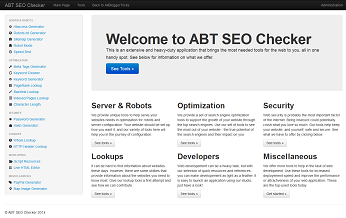

While this adds an absolute ton of functionality to your WordPress dashboard, the main item you’re looking for here is your Posts area.

This dashboard adds Google Analytics functionality right in your WordPress admin console. If your site is based on a WordPress architecture, and you use Google Analytics, you can make use of a plugin called Google Analytics Dashboard for WP. In any case, make a list of all of the articles with zero traffic in whatever period you want to check. After all, a post might have gotten a bunch of traffic three months ago, but none in the last month, because it was published three months ago. Smaller or newer sites don’t necessarily want to use such long-lasting metrics. Larger sites can use longer periods if an article hasn’t gotten a single view in the last year, it’s a prime target. Make this list of everything that has zero views over the last month, or two months, or whatever period you want to use. Surprised? They aren’t all dreadfully complex. If the post even has a single view, that’s worthwhile and you shouldn’t put it on your audit list. When looking at your site for a per-month basis, look for anything that has zero views. Then adjust the time factor to see traffic by day, week, month, or another period. You can expand this table to add more rows – the “show rows” button – and keep doing it until you see everything on your site. There should be a button labeled “pages report.” Click on that and it will give you the top posts on your site, usually, in a table with traffic and a few other metrics. Look for the “what pages do your users visit?” section in the new dashboard. The first thing you need to do is log into your Google Analytics dashboard.
#BLOG SEO CHECKER HOW TO#
If you’re using something else, like Raven Tools, you’ll have to figure out how to do something similar to what I’m doing here on your own. This is good, because I’m assuming you’re using it. The question is, how can you see that traffic on a per-post level? And, once you know those metrics, what do you do? Checking Traffic at a Per-Post LevelĬhances are pretty good that you’re using Google Analytics to monitor information about your site. If you have a site more than a year old, with a blog that has been published at least twice a week, there’s a pretty good chance that a portion of your content no longer sees any traffic at all. Evergreen articles maintain some slow trickle, more often than not, but old and time-sensitive content often leaves nothing left. We all recognize that traffic tends to drop off over time. It’s a metric we can use to gauge how well our marketing is working, how well our content brings people in, and how our site is doing overall. You can also use this website analysis for your clients to give them an idea about their site's SEO performance.Most of us – and by “us” I mean website owners with blogs – are generally concerned with traffic across our sites. You can find out about their website speed through this test. Similarly, our website SEO Checker can also be used to assess competitor websites in identifying the areas where they’re performing well. That’ll create a clearer picture of your SEO efforts.

#BLOG SEO CHECKER FREE#
Once you go through this SEO audit and work on the weak areas, it’ll further help you in ranking better.Īfter you’ve made the desired changes, return to our free website analysis tool and check for a fresh SEO site checkup. You can also zero-in on your website’s weaknesses and strengths, that’ll further tell you what areas to work on to make it better. This detailed information by the site checker will help you in learning all the places where your website is lacking in the field of SEO. Within seconds, you’ll be presented with complete SEO analysis results along with details on other parameters like the Technology used, Social Media presence, Mobile Rendering etc. The rest will be handled by the SEO checker tool. How Web Analyser Tool Works | Website SEO Checkerīasically, to run this tool, all you need to do is enter a domain in the search box and click on the “Analyze” button beside it.


 0 kommentar(er)
0 kommentar(er)
